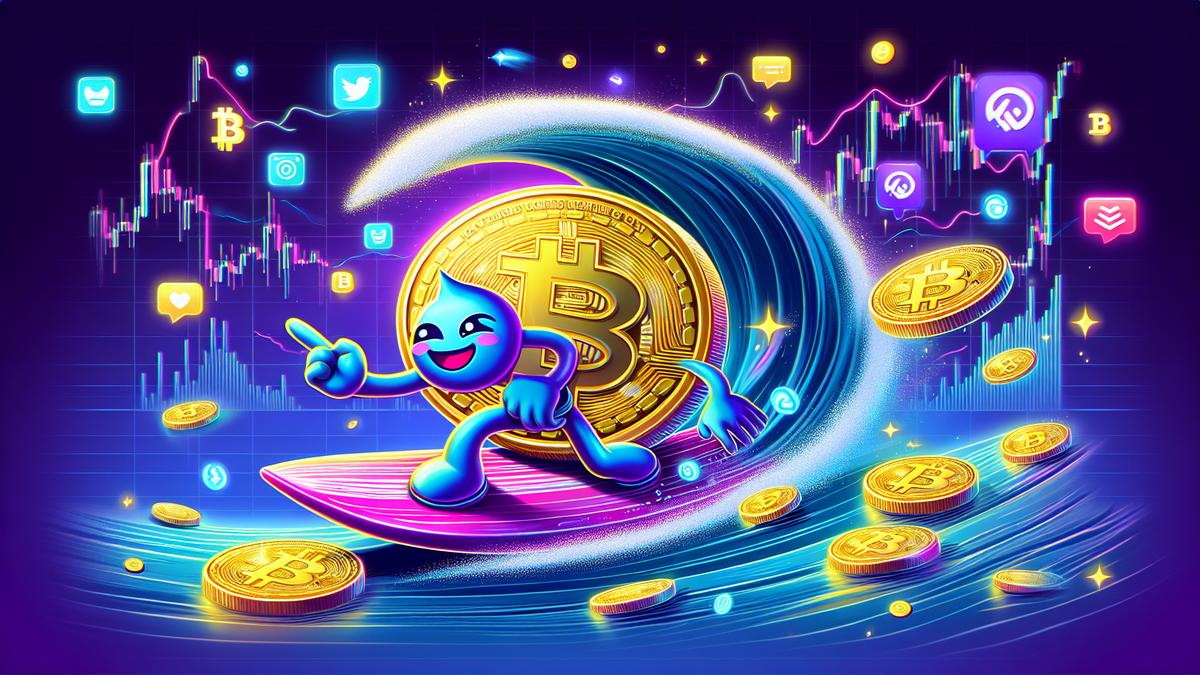Table of Contents
- The Situation
- TL;DR – Our Final Verdict
- Useful Links
- The Numbers Don’t Lie
- The Opportunity
- The Risks
- What People Are Saying
- How We Analyzed This
- Our Final Take
- Legal Disclaimer
The Situation
Welcome to the wild world of KAKA, the Solana-based meme token that’s catching some eyeballs. With social media’s ability to make or break trends, this token is trying to surf the meme wave. Yet, its story is a peculiar one. Despite the buzz in trading volumes, it has a surprisingly low-key social media presence, leaving traders wondering: is this token gold or just glitter?
TL;DR – Our Final Verdict
You might want to keep a close watch on KAKA for now. Its high trading volume compared to its market cap indicates that something interesting is happening, but its lack of major exchange listings and modest social following are red flags. Exercise caution if you’re thinking about diving in but prepare to act quickly if things tip in its favor.
Useful Links
The Numbers Don’t Lie
In the world of KAKA, numbers sing a curious tune. The top holder controls about 6.86% of its supply, an eyebrow-raising amount for any investor wary of centralization risk. Top 20 wallets hold over a quarter of the supply, underscoring this concern. What really raises the stakes is the token’s 24-hour trading volume, which is an astonishing 41.89 times greater than its market cap. Combine that with a liquidity rate that’s only 13.68% of this daily volume, and it’s clear that liquidity issues loom large.
The Opportunity
Unpacking the potential of KAKA reveals a unique landscape. This Solana-based token sits on a blockchain known for its speed and low transaction costs, suggesting scalability benefits down the road. It’s still only discovered on lesser-known decentralized exchanges, hinting at untapped potential if it scores a spot on a major exchange. The real kicker? Its disproportionate trading volume to market cap ratio suggests there’s strong trader interest, hinting at opportunities for savvy players to exploit volatile swings.
The Risks
You’ve heard some of these warning bells already, but here’s the full picture of what could go sideways:
- Heavy whale control with top wallets owning significant supply could lead to price manipulation.
- High trading volume relative to market cap could mean wash trading or bot activities.
- Liquidity challenges due to the underwhelming liquidity-to-market cap ratio.
- Lack of listings on major exchanges adds to risk due to lesser oversight.
- Vulnerabilities in Solana’s network could translate to hiccups for KAKA.
- Potential pitfalls from fragmented liquidity due to listings on various trading pairs and exchanges.
- A slight social media presence with virtually no Twitter engagement could affect market sentiment and price stability.
What People Are Saying
The chatter around KAKA paints a sometimes lukewarm yet hopeful picture. Reddit reveals pockets of interest but less so a bustling forum presence. Positioning as a meme coin, KAKA hopes to tap into social narratives akin to Dogecoin, yet it lacks a concrete online presence with only 1,650 Twitter followers. While some tweets promote its potential, without more robust community and partnership building, its chance to ride the meme wave looks limited.
How We Analyzed This
We put this token through our 5-AI agent analysis system. Each specialist AI focused on different aspects – quantitative data, opportunities, risks, and social sentiment – before our final AI synthesized everything into this verdict. This holistic approach ensures a comprehensive view, saving you the legwork.
Our Final Take
KAKA presents a fascinating, albeit risky, play in the crypto world. While strategic positioning on the Solana blockchain and tantalizingly high trading volumes hint at possibilities, the red flags of limited exchange exposure and subdued social momentum advise caution. Our take? Keep your finger on the pulse, and be prepared to act quickly if the underlying dynamics shift in its favor.
Legal Disclaimer
This article is intended for informational purposes only and should not be considered financial advice. Cryptocurrency investments are inherently risky, and you should do your own research (DYOR) before making any investment decisions. Always consult with a financial advisor.

